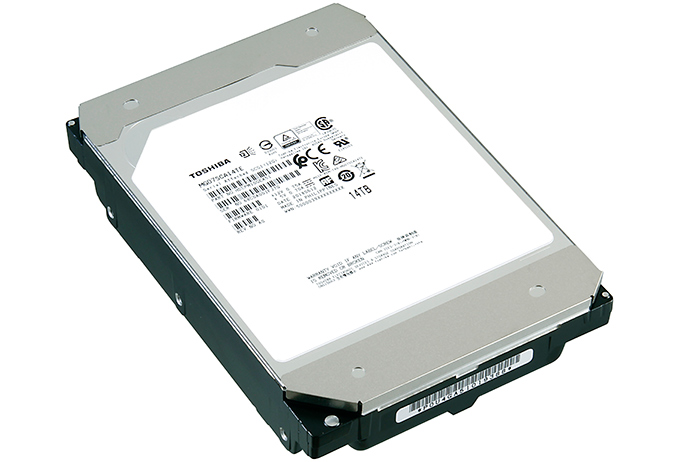Toshiba's HDD Tech Roadmap: A Mix of SMR, MAMR, TDMR, and HAMR
by Anton Shilov on March 13, 2019 1:00 PM EST
In an interview published this week with Blocks & Files, Toshiba outlined the company will be relying on a mix of hard drive technologies in order to keep increasing hard drive capacities. Along with current-generation two-dimensional magnetic recording (TDMR) and shingled magnetic recording (SMR) technologies, the company will also be tapping both microwave assisted magnetic recording (MAMR) as well as heat-assisted magnetic recording (HAMR) for future drives. Already gearing up to ship its first 16 TB TDMR drives, Toshiba's short-term development plans call for it to adopt SMR as well as MAMR. Meanwhile in the longer-term, HAMR will be introduced for further capacity increases.
Earlier this year Showa Denko, Toshiba’s supplier of HDD media, revealed that the company would be supplying platters for hard drives based on MAMR technology. Toshiba has since confirmed their plans to use MAMR in this week's interview, but in an added twist, the company also noted that some of its high-capacity MAMR hard drives will use shingling as well.
“MAMR will be used to advance the capacity of both CMR (discrete track) recording and to SMR (shingled track) recording,” Scott Wright, director of HDD marketing at Toshiba America Electronic Components.
Overall, It is not a secret that for years now Toshiba has been working on hard drives featuring SMR technology. However unlike its competitors, the company has yet to introduce any commercial SMR hard drives, so these new MAMR + SMR drives would be the first commercial SMR deployment for the company. SMR of course brings some new performance trade-offs due to the read-modify-write cycle introduced by shingled tracks, but it still makes a great deal of sense for high-capacity HDDs since it allows drive vendors to increase their capacities without switching to a new type of media.
Toshiba's MAMR-based HDDs will begin sampling later this year. And, accounting for a few quarters for datacenter operators to validate the new drives, we should see their MAMR hard drives to enter volume production in 2020.
Looking further out, Toshiba has also said that sooner or later it will have to use HAMR, due in large part to the higher scalability that the technology offers.
“In theory, MAMR does not advance long-term areal density gain as far as what may be achievable with HAMR. MAMR is certainly the next step; HAMR is very likely an eventual future step up the areal density ladder.”
By adopting MAMR for their 2019 – 2020 nearline HDDs Toshiba and Western Digital can continue using HDD media that is similar to platters used today. By contrast, Seagate is set to skip MAMR and use HAMR along with brand new disks instead.
Related Reading:
- 18 TB HDDs: Toshiba Collaborates with Showa Denko for MAMR HDDs
- Toshiba at CES 2019: World’s First 16 TB TDMR HDD Debuts
- Toshiba Launches 12 TB and 14 TB HDDs for Desktops and NAS [UPDATED with MSRPs]
- State of the Union: Seagate's HAMR Hard Drives, Dual-Actuator Mach2, and 24 TB HDDs on Track
- Western Digital to Demo Dual-Actuator HDDs Next Week: Double the Actuators for Double the Perf
Source: Blocks & Files










12 Comments
View All Comments
ksec - Thursday, March 14, 2019 - link
That is until you have Exabyte or Zetabyte of Data to backup. HDD are going to be a DC / Enterprise Storage usage only.DanNeely - Monday, March 18, 2019 - link
We're still several years from flash becoming cheaper than HDDs on a $/TB basis; until that point is reached there's still a market for big HDDs for bulk data storage in NASes or data centers.The most recent estimate I've seen is a few years old and was predicting mid 2020's for the crossover.